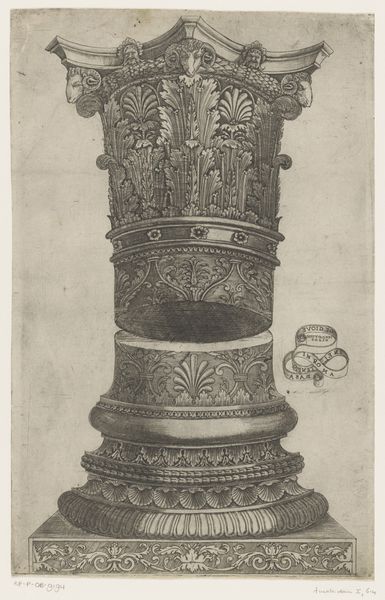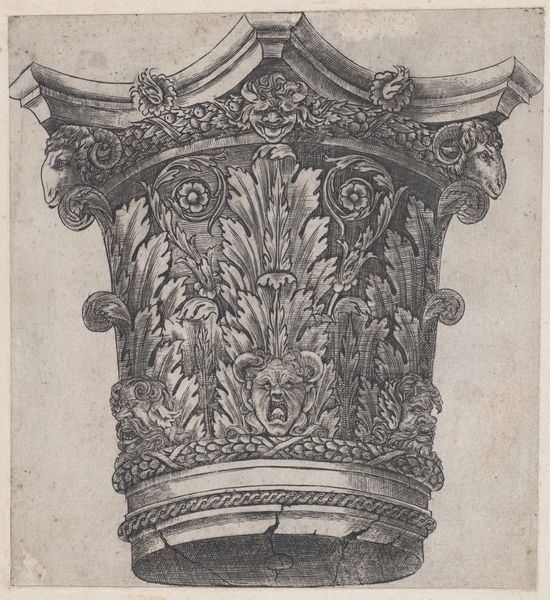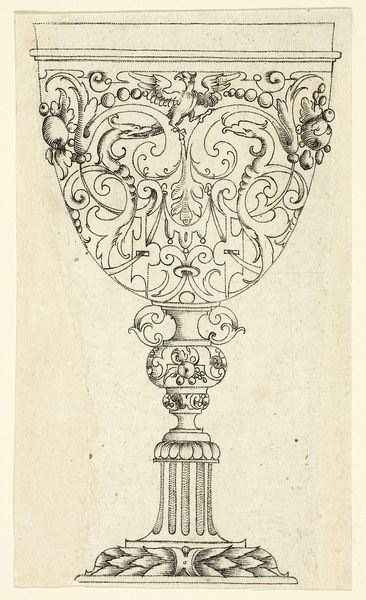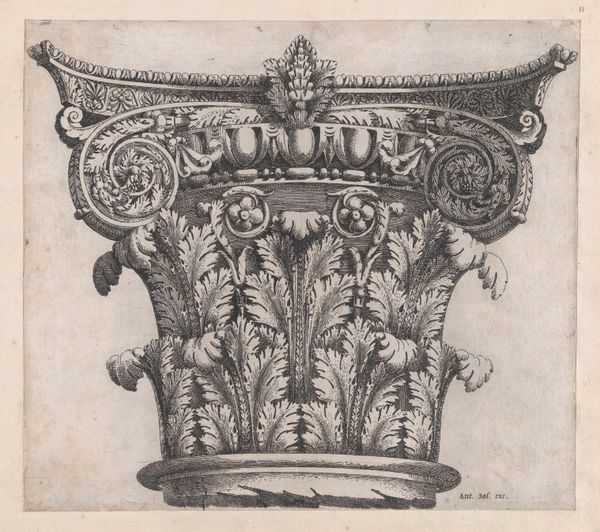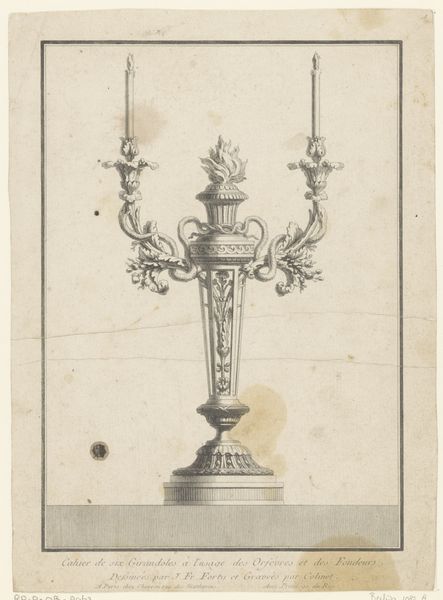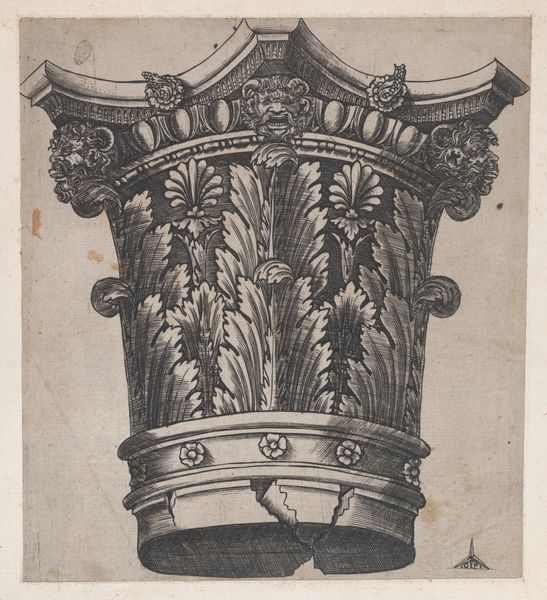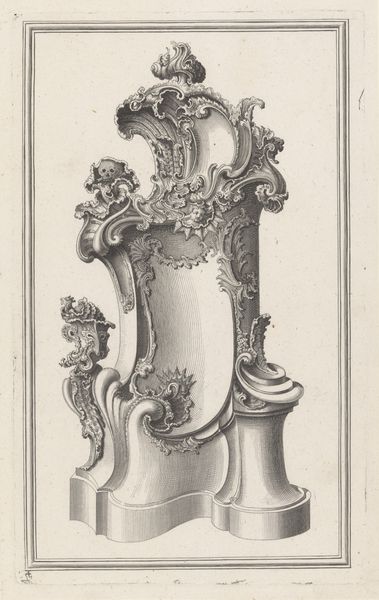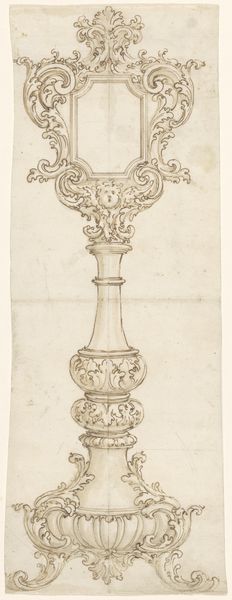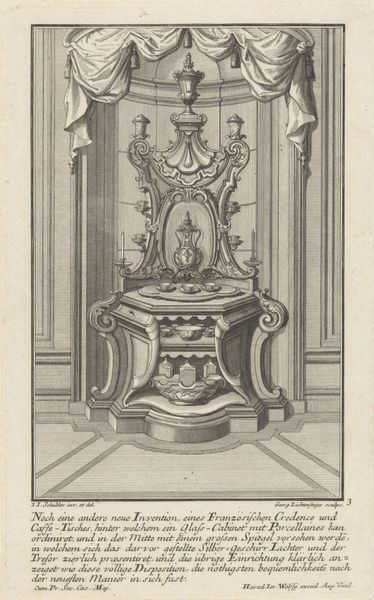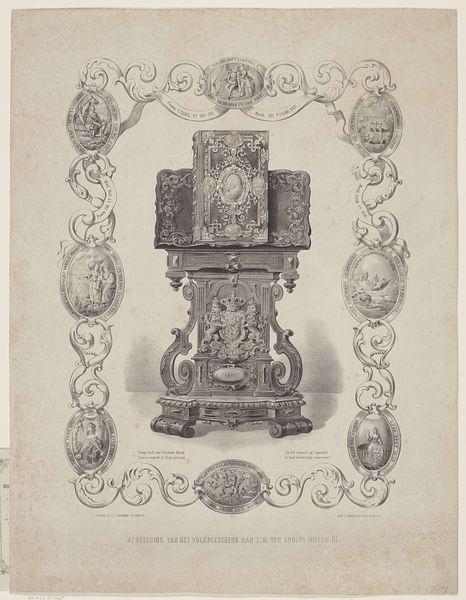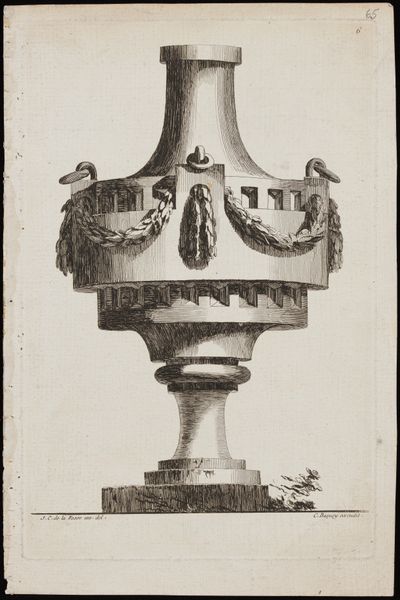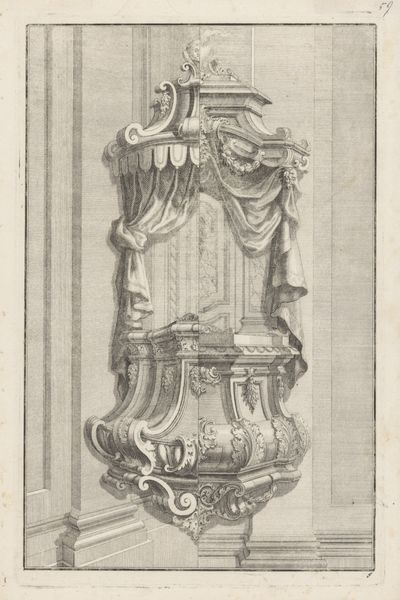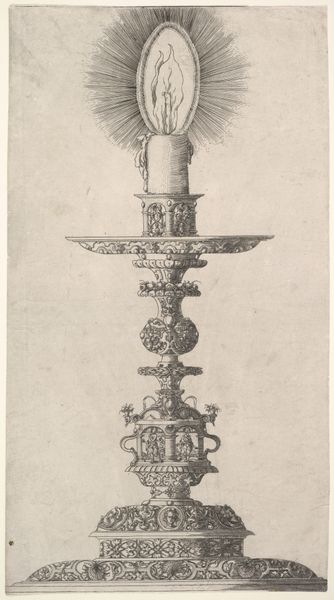
Speculum Romanae Magnificentiae: Decorated capital and base 1534 - 1540
0:00
0:00
drawing, print, engraving, architecture
#
drawing
# print
#
old engraving style
#
classical-realism
#
form
#
11_renaissance
#
geometric
#
line
#
decorative-art
#
italian-renaissance
#
engraving
#
architecture
Dimensions: mount: 16 9/16 x 12 11/16 in. (42 x 32.3 cm) sheet: 11 11/16 x 8 1/4 in. (29.7 x 21 cm)
Copyright: Public Domain
Editor: So, here we have “Speculum Romanae Magnificentiae: Decorated capital and base,” an engraving by Monogrammist G.A. & the Caltrop, dating from sometime between 1534 and 1540. I'm immediately struck by the incredible detail—it feels almost obsessive in its rendering of classical motifs. How do you interpret this kind of… almost fanatical dedication to architectural detail? Curator: Well, consider the socio-political climate of the time. The "Speculum Romanae Magnificentiae" wasn't just a collection of pretty pictures. It was a project aimed at visually reconstructing the grandeur of ancient Rome, right? Its images were disseminated as individual prints, a tool. Editor: A tool for…? Curator: Think about it. Who were the patrons, the buyers of these prints? Architects, certainly. But also rulers, nobles, anyone aspiring to power and legitimacy. These images, in their obsessive detail as you put it, presented a visual language of authority, of historical precedent. Imagine the symbolic weight of incorporating these architectural elements into new constructions. Editor: So, the print isn't just documentation; it's actively shaping architectural trends and, therefore, power structures. It's providing blueprints, almost. But why focus on fragments? Why not complete buildings? Curator: That's an excellent point. By isolating elements like this capital and base, the print emphasizes their symbolic importance. Each detail—the acanthus leaves, the cherubs—becomes a standalone emblem of Roman authority, easily replicated and repurposed. Also, the 'fragment' appeals to humanistic notions: to reconstruct and emulate classical civilization, one only needed to begin from these details. Does that give you something to think about? Editor: It really does. I initially saw the print as an isolated object, but understanding its place in this larger project, and in the context of Renaissance power dynamics, makes it so much richer. Thanks! Curator: My pleasure. Seeing art within its historical and social frame always opens new avenues of appreciation.
Comments
No comments
Be the first to comment and join the conversation on the ultimate creative platform.
